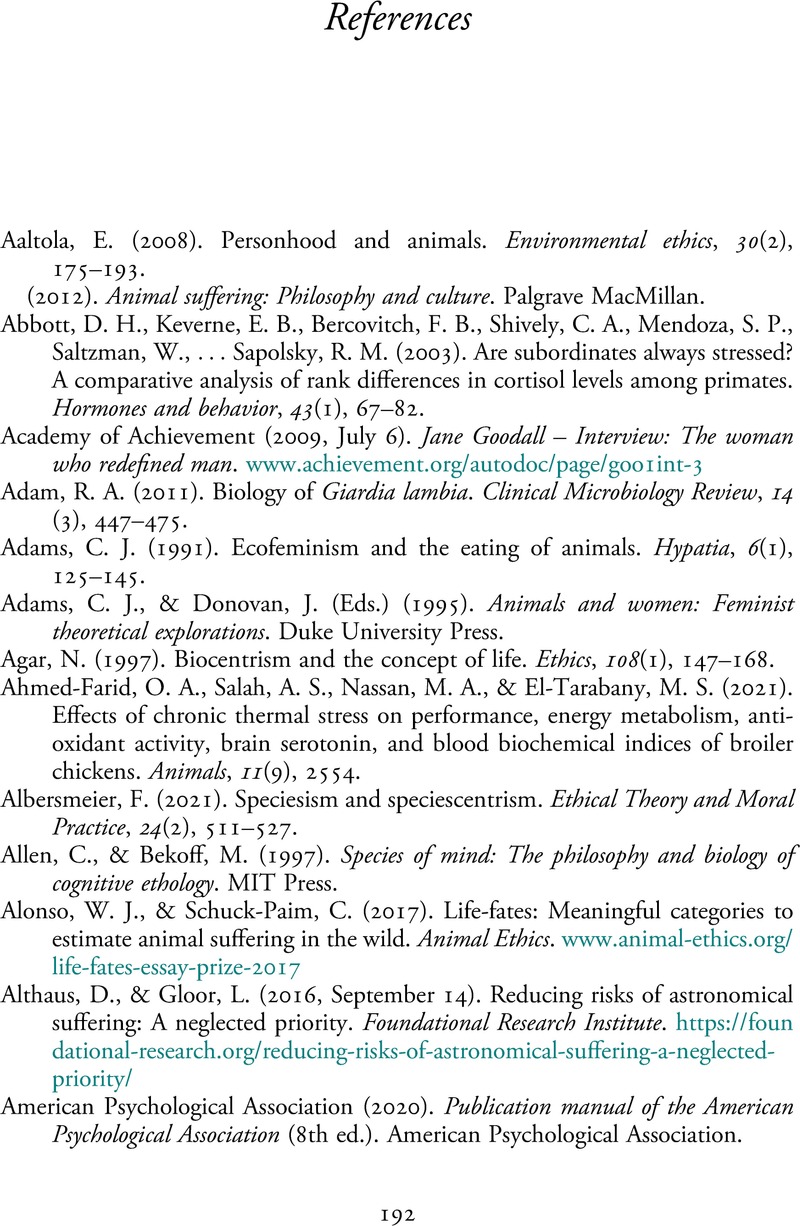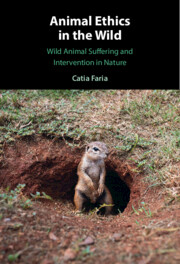Book contents
- Animal Ethics in the Wild
- Animal Ethics in the Wild
- Copyright page
- Contents
- Tables
- Acknowledgments
- Introduction
- Chapter 1 Moral Considerability
- Chapter 2 Speciesism
- Chapter 3 Wild Animal Suffering
- Chapter 4 Perversity and Futility
- Chapter 5 Jeopardy
- Chapter 6 Relationality
- Chapter 7 Priority
- Chapter 8 Tractability
- Conclusion
- References
- Index
- References
References
Published online by Cambridge University Press: 18 January 2023
- Animal Ethics in the Wild
- Animal Ethics in the Wild
- Copyright page
- Contents
- Tables
- Acknowledgments
- Introduction
- Chapter 1 Moral Considerability
- Chapter 2 Speciesism
- Chapter 3 Wild Animal Suffering
- Chapter 4 Perversity and Futility
- Chapter 5 Jeopardy
- Chapter 6 Relationality
- Chapter 7 Priority
- Chapter 8 Tractability
- Conclusion
- References
- Index
- References
Summary

- Type
- Chapter
- Information
- Animal Ethics in the WildWild Animal Suffering and Intervention in Nature, pp. 192 - 219Publisher: Cambridge University PressPrint publication year: 2022



